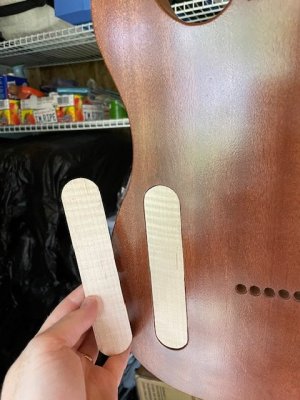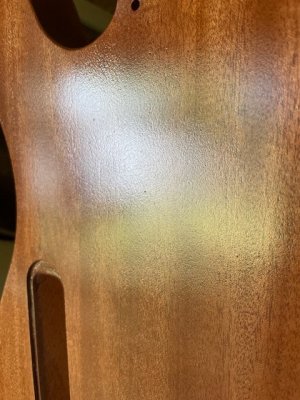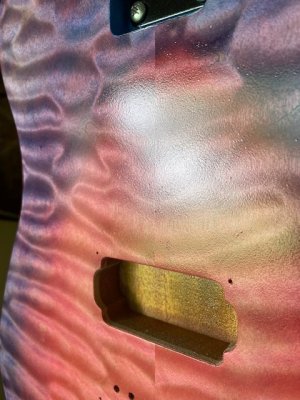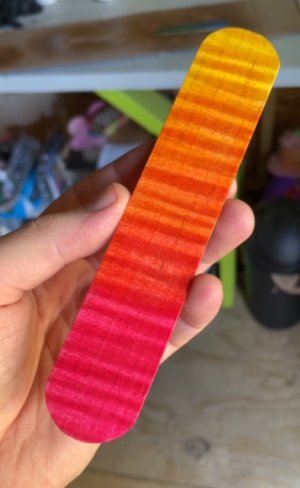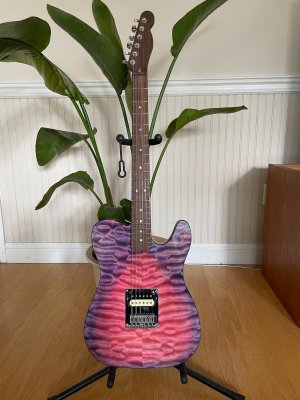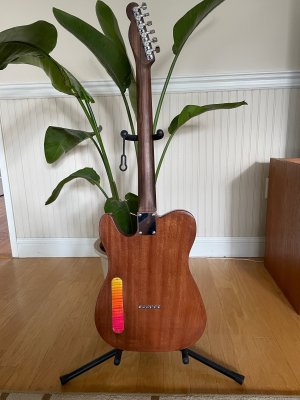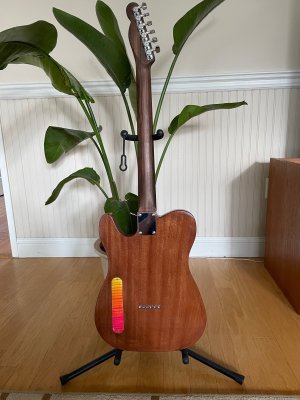It is done!

I ended up drying the nitro finish for two weeks and then wet sanded it at 600, 1000, 1500 and 2000 grit followed by hand buffing with Meguiar's Mirror Glaze #9.
The sanding is where I struggled: I was afraid to level sand too much because my finish seems to be very thin, and I didn't want to burn through. Much of the guitar is perfectly smooth, but there are plenty of low spots. I don't think this is an issue of grain filling because it was present on the maple top as well as the mahogany back. Buffing by hand was a bit challenging, and I can definitely achieve a glossier finish with an electric buffer, but I'll save that for the next build.
Added the hardware and installed a Grover Jackson Poblano PAF wired directly to the output jack.
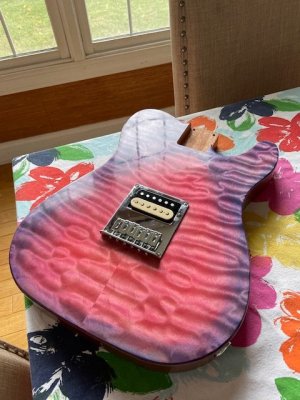
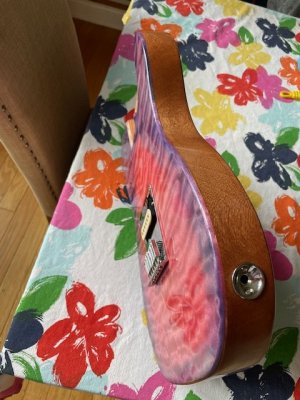
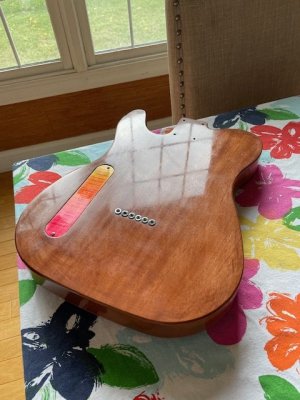
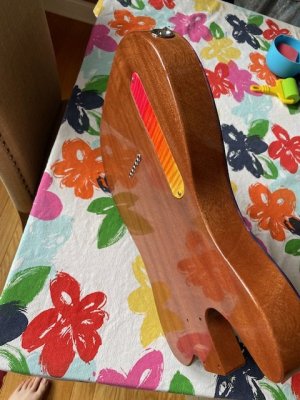
Farewell green flame, hello pink quilt:
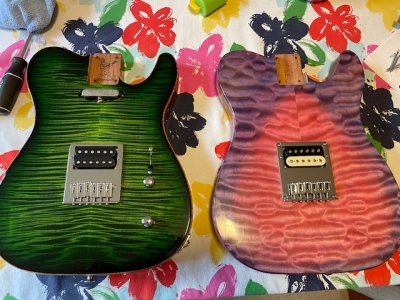
Strung it up, intonated, and played for an hour. Sounds terrific! Pickup has bite and the guitar truly sounds phenomenal. Both plugged in and acoustically (I'm sure the new set of strings doesn't hurt!). At times I find myself missing the volume knob and neck pickup, but it's also liberating to not have to play around with the settings to adjust the tone - it has only one (and I can add the knobs later if I need them).
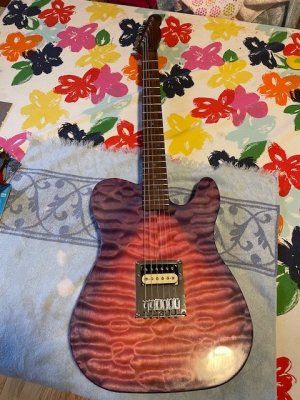
Overall, finishing a guitar on your own is a very rewarding experience! Despite the build not being perfect, it's completely bespoke, from design to color to finish materials, which makes it even more special than factory-finished bodies. I learned a ton, and I will certainly be avoiding some of the pitfalls on my next build. Plus, I've always wanted an insane quilt top. Thanks for tagging along for the ride in this thread!
Now to take a few good pics and submit for consideration as a primo build




